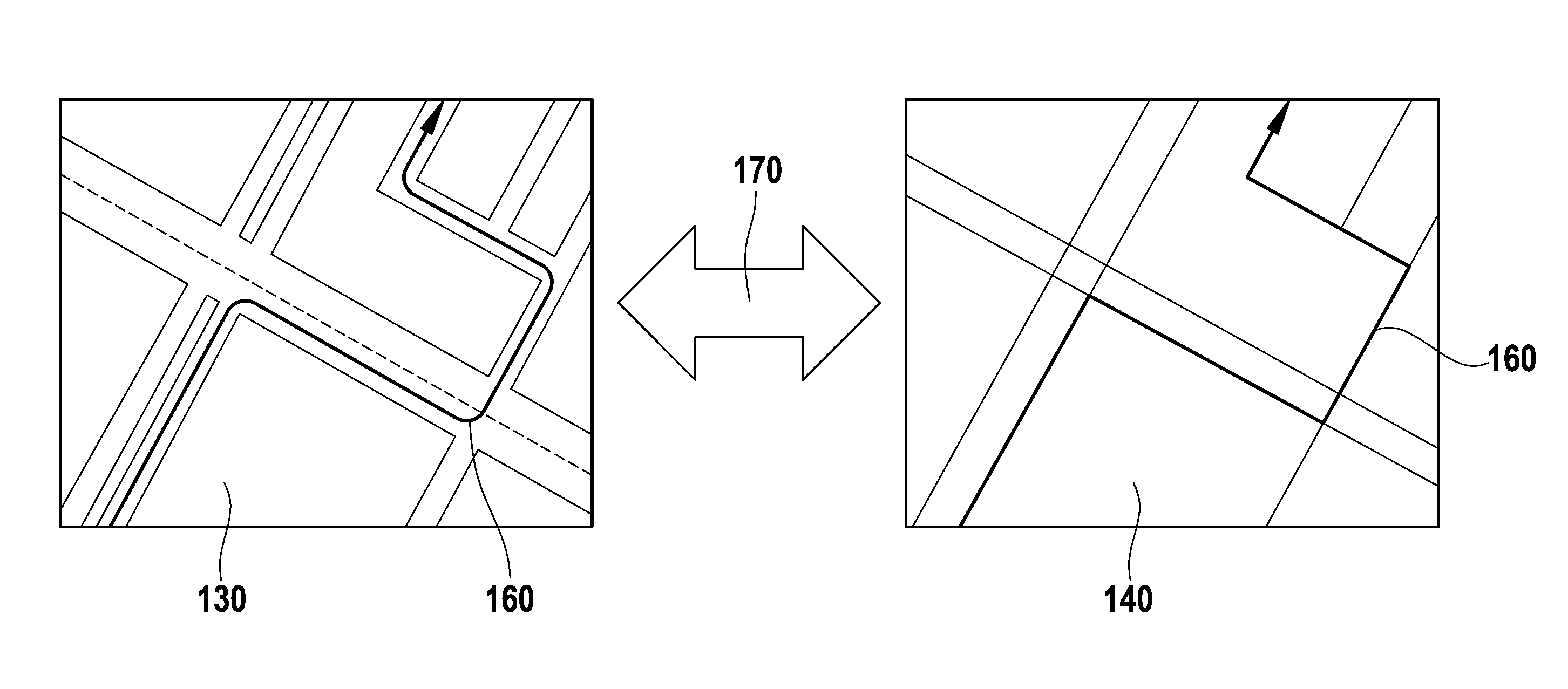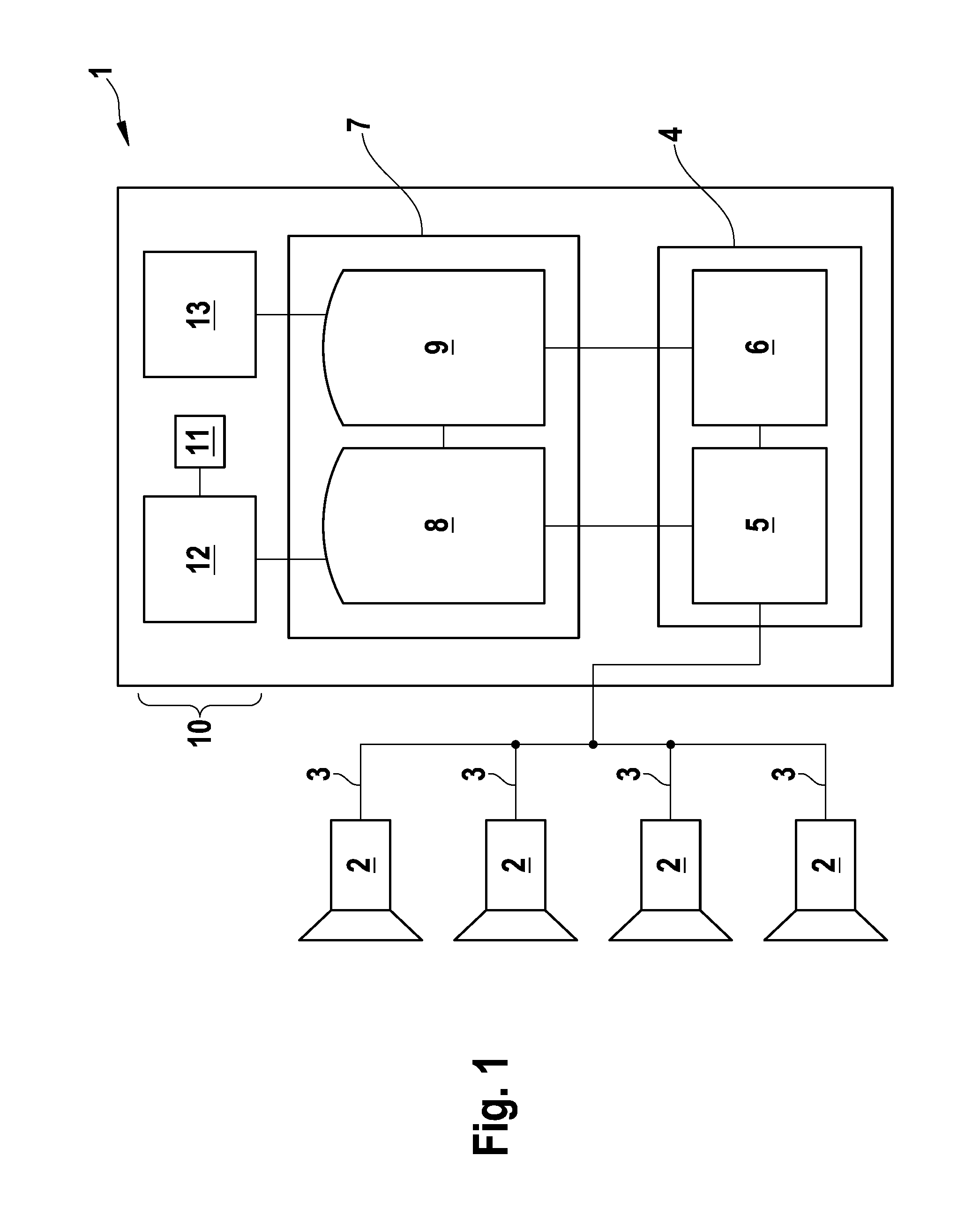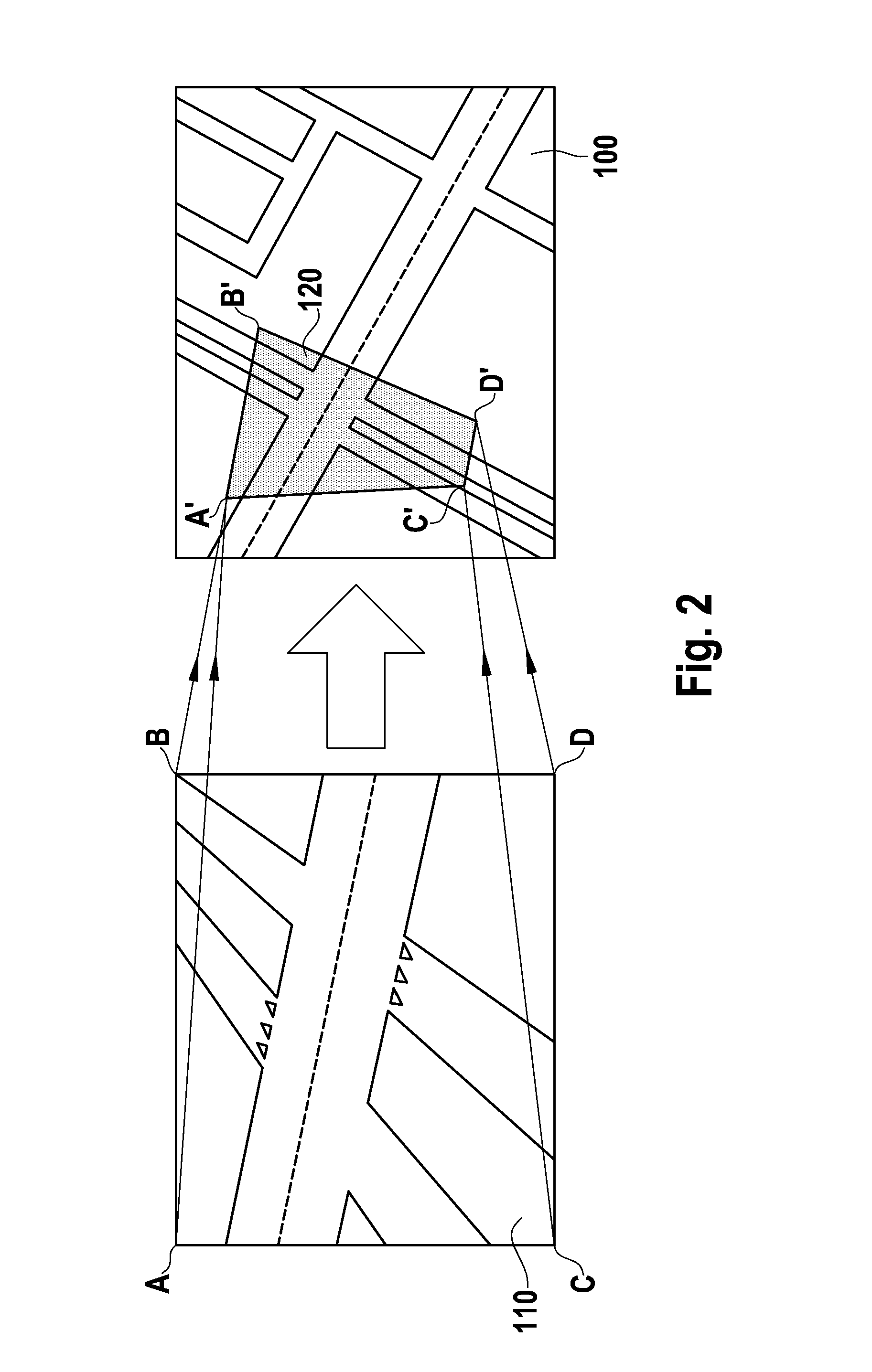Video retrieval system, method and computer program for surveillance of moving objects
a technology of moving objects and retrieval systems, applied in the field of video retrieval systems, can solve the problems of high personnel costs, and achieve the effects of improving processing time, improving accuracy, and improving accuracy
- Summary
- Abstract
- Description
- Claims
- Application Information
AI Technical Summary
Benefits of technology
Problems solved by technology
Method used
Image
Examples
Embodiment Construction
[0007]The video retrieval system according to the invention is connectable and / or connected to a plurality or multitude of surveillance cameras. The connection is preferably carried out as a direct wire-connection and / or as a wired or wireless network connection.
[0008]The surveillance cameras are preferably realized as standard video cameras and / or adapted surveillance cameras like cameras with a field of view of 360°. Preferably the cameras are sensible for the visible light spectrum, i.e. 400 nm to 650 nm, alternatively one or more of the cameras is sensible for the UV-spectrum, which is from 300 nm to 400 nm, and / or for the near-infrared, which is from 650 nm to 900 nm, and / or for the infrared or far infrared. Especially night-vision cameras can also be used. The cameras are preferably positioned to monitor street crossings, large places and other locations with traffic junctions and / or streets, like highways.
[0009]A displaying means is realized to display a graphical overall des...
PUM
 Login to View More
Login to View More Abstract
Description
Claims
Application Information
 Login to View More
Login to View More - R&D
- Intellectual Property
- Life Sciences
- Materials
- Tech Scout
- Unparalleled Data Quality
- Higher Quality Content
- 60% Fewer Hallucinations
Browse by: Latest US Patents, China's latest patents, Technical Efficacy Thesaurus, Application Domain, Technology Topic, Popular Technical Reports.
© 2025 PatSnap. All rights reserved.Legal|Privacy policy|Modern Slavery Act Transparency Statement|Sitemap|About US| Contact US: help@patsnap.com



